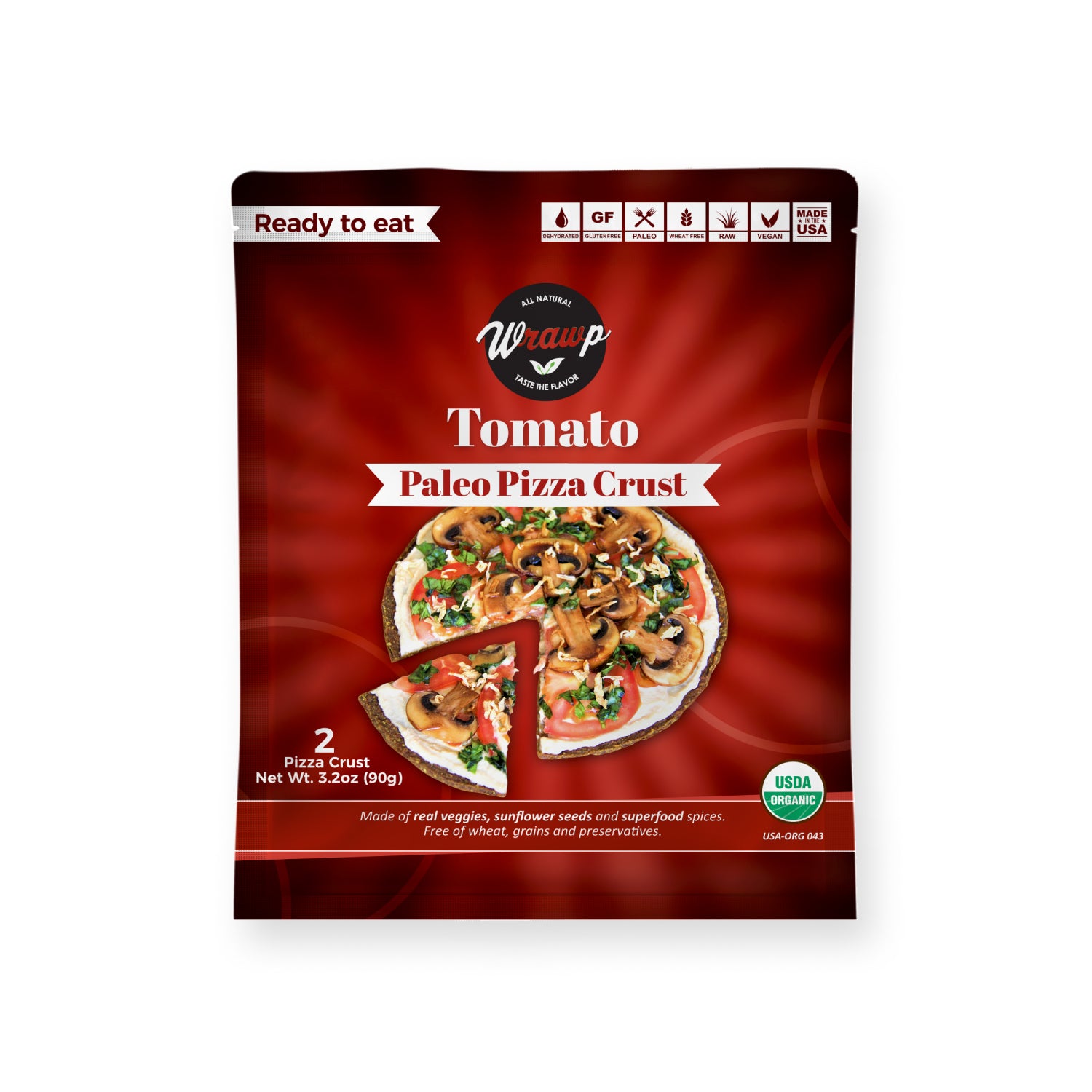Contents
- I. Introduction
- II. Organic Toppings for Pizza
- III. Organic Pizza Crusts
- IV. Health Benefits of Organic Pizza Ingredients
- V. Organic Pizza Recipes
- VI. Where to Find Organic Pizza Ingredients
- VII. Tips for Making Organic Pizza at Home
- VIII. Organic Pizza vs. Conventional Pizza
- IX. Frequently Asked Questions (FAQs)
- 1. Are organic pizza ingredients more expensive?
- 2. Can I use frozen organic vegetables for pizza?
- 3. Is organic pizza healthier than regular pizza?
- 4. Can I use organic cheese on my pizza?
- 5. How can I tell if a pizza crust is organic?
- 6. Are organic pizza crusts gluten-free?
- 7. Can I make organic pizza with pre-made dough?
- 8. Are there any organic pizza delivery options?
- 9. Can I freeze leftover organic pizza?
- 10. Are there any organic pizza chains?
I. Introduction

Welcome to the world of organic pizza! In this article, we will delve into the fascinating realm of natural toppings and crusts that make organic pizza a delicious and healthy choice. Whether you are a pizza lover or someone looking for healthier alternatives, this article is for you.
Organic pizza is gaining popularity due to its use of high-quality, pesticide-free ingredients that are better for both our bodies and the environment. By choosing organic toppings and crusts, you can enjoy a guilt-free pizza experience without compromising on taste.
In this article, we will explore a wide range of natural toppings that can elevate your pizza to a whole new level. From fresh vegetables and herbs to sustainably sourced meats and artisanal cheeses, we will cover it all. We will also dive into the world of organic crusts, including gluten-free options for those with dietary restrictions.
Not only will we discuss the benefits of organic pizza ingredients, but we will also provide tips on how to make your own organic pizza at home. You don’t have to be a professional chef to create a mouthwatering organic pizza that will impress your friends and family.
So, get ready to embark on a culinary adventure as we explore the world of organic pizza ingredients. Let’s discover the natural flavors and textures that can transform a simple pizza into a gourmet masterpiece. Get ready to tantalize your taste buds and nourish your body with the goodness of organic pizza!
II. Organic Toppings for Pizza

When it comes to creating a delicious and healthy pizza, the choice of toppings is key. By opting for organic toppings, you can enhance the flavor of your pizza while also ensuring that you are consuming ingredients that are free from harmful chemicals and pesticides. In this section, we will explore a variety of organic toppings that you can use to elevate your pizza game.
A. Fresh vegetables
Adding fresh vegetables to your pizza not only adds vibrant colors but also provides essential nutrients. Here are three organic vegetables that you can use as toppings:
- 1. Tomatoes: Juicy and bursting with flavor, organic tomatoes are a classic choice for pizza toppings. They add a tangy and slightly sweet taste that complements the other ingredients perfectly.
- 2. Bell peppers: Whether you prefer the green, red, or yellow variety, organic bell peppers bring a delightful crunch and a hint of sweetness to your pizza. They are rich in vitamins A and C, making them a healthy choice.
- 3. Mushrooms: Organic mushrooms come in various types, such as button, cremini, and portobello. They add a savory and earthy flavor to your pizza, making it more satisfying.
B. Leafy greens
Leafy greens not only add a pop of color to your pizza but also provide a nutritional boost. Here are three organic leafy greens that you can incorporate into your pizza:
- 1. Spinach: Organic spinach leaves are tender and packed with vitamins and minerals. They have a mild and slightly earthy taste that pairs well with other toppings.
- 2. Arugula: With its peppery and slightly bitter flavor, organic arugula adds a distinct taste to your pizza. It also provides a good source of calcium and vitamins A and K.
- 3. Kale: Organic kale leaves are hearty and have a slightly bitter taste. They are packed with nutrients like fiber, vitamins A, C, and K, and antioxidants, making them a nutritious choice for your pizza.
C. Herbs and spices
Herbs and spices can take your pizza to the next level by adding depth and complexity to the flavors. Here are three organic herbs and spices that you can sprinkle on your pizza:
- 1. Basil: Organic basil leaves have a sweet and slightly peppery taste. They are commonly used in Italian cuisine and bring a fresh and aromatic flavor to your pizza.
- 2. Oregano: Organic oregano adds a robust and slightly bitter taste to your pizza. It pairs well with tomatoes and other Italian flavors, enhancing the overall taste of the pizza.
- 3. Garlic: Organic garlic cloves have a pungent and savory flavor. When thinly sliced or minced, they release their distinct taste and aroma, making your pizza more flavorful.
D. Organic meats
If you enjoy meat on your pizza, opting for organic options ensures that you are consuming high-quality and ethically sourced ingredients. Here are three organic meats that you can use as pizza toppings:
- 1. Free-range chicken: Organic free-range chicken is raised without antibiotics or hormones. It provides a lean and tender meat option for your pizza, adding a savory and satisfying element.
- 2. Grass-fed beef: Organic grass-fed beef comes from cows that are raised on a natural diet of grass. It has a richer flavor compared to conventionally raised beef, making it a delicious choice for meat lovers.
- 3. Nitrate-free bacon: Organic nitrate-free bacon is made without the use of artificial preservatives. It adds a smoky and savory taste to your pizza, elevating the overall flavor profile.
By using these organic toppings, you can create a pizza that is not only delicious but also healthier and more environmentally friendly. Experiment with different combinations and discover your favorite organic pizza toppings!
III. Organic Pizza Crusts

When it comes to organic pizza crusts, there are several options available in the market. These crusts are made with natural ingredients and are a healthier alternative to traditional pizza crusts. In this section, we will explore some of the popular organic pizza crust options:
A. Whole Wheat Crust
Whole wheat crust is a nutritious and delicious option for those who prefer a healthier pizza crust. Made from whole wheat flour, this crust is packed with fiber, vitamins, and minerals. It has a slightly nutty flavor and a chewy texture that adds a unique taste to your pizza.
One of the advantages of using whole wheat crust is that it has a lower glycemic index compared to refined flour crusts. This means that it causes a slower rise in blood sugar levels, making it a suitable choice for individuals with diabetes or those who want to maintain stable blood sugar levels.
Whole wheat crusts are also rich in antioxidants, which help protect the body against oxidative stress and inflammation. These antioxidants are found in the bran and germ of the wheat grain, which are retained in whole wheat flour.
IV. Health Benefits of Organic Pizza Ingredients

When it comes to pizza, most people think of it as a guilty pleasure. However, by using organic ingredients, you can transform this beloved dish into a healthier option. Organic pizza ingredients offer numerous health benefits that go beyond just satisfying your taste buds. In this section, we will explore the various advantages of using organic toppings and crusts in your pizza.
A. Higher nutrient content
One of the key benefits of using organic pizza ingredients is the higher nutrient content they offer. Organic fruits, vegetables, and herbs are grown without the use of synthetic pesticides, herbicides, or genetically modified organisms (GMOs). As a result, they retain more vitamins, minerals, and antioxidants compared to conventionally grown counterparts.
For instance, organic tomatoes used in pizza sauce are rich in lycopene, a powerful antioxidant that has been linked to a reduced risk of heart disease and certain types of cancer. Organic spinach, another popular pizza topping, is packed with iron, calcium, and vitamins A and C. These nutrients are essential for maintaining healthy bones, boosting the immune system, and promoting overall well-being.
By opting for organic pizza ingredients, you can ensure that you are getting the maximum nutritional value from your meal. Not only will your taste buds thank you, but your body will benefit from the abundance of vitamins and minerals.
B. Lower pesticide exposure
Another significant advantage of choosing organic pizza ingredients is the reduced exposure to harmful pesticides. Conventionally grown produce is often treated with synthetic chemicals to protect against pests and diseases. However, these pesticides can leave residues on the fruits and vegetables we consume.
Studies have shown that long-term exposure to pesticides can have detrimental effects on our health, including an increased risk of cancer, developmental issues in children, and disruption of the endocrine system. By using organic ingredients, you can minimize your exposure to these harmful substances and enjoy a healthier pizza experience.
Organic farming practices prioritize the use of natural pest control methods, such as crop rotation, companion planting, and the introduction of beneficial insects. These methods not only protect the environment but also ensure that your pizza is free from harmful chemical residues.
C. Reduced environmental impact
Choosing organic pizza ingredients also has a positive impact on the environment. Organic farming practices promote sustainability and prioritize the health of the ecosystem. Unlike conventional agriculture, organic farming avoids the use of synthetic fertilizers and relies on natural methods to nourish the soil.
By using organic ingredients, you are supporting farmers who prioritize soil conservation, water management, and biodiversity. Organic farming methods help preserve the quality of soil, prevent erosion, and protect water sources from pollution. Additionally, organic farming reduces greenhouse gas emissions and contributes to mitigating climate change.
When you enjoy a pizza made with organic ingredients, you can feel good knowing that you are making a conscious choice to support sustainable agriculture and protect the environment.
V. Organic Pizza Recipes

When it comes to pizza, there’s nothing quite like the taste of organic ingredients. Not only do they provide a healthier option, but they also enhance the flavors of the toppings and crust. In this section, we will explore three delicious organic pizza recipes that are sure to satisfy your taste buds.
A. Margherita Pizza with Organic Ingredients
The classic Margherita pizza is a timeless favorite that showcases the simplicity and freshness of organic ingredients. To make this mouthwatering pizza, you will need the following:
- Organic pizza dough
- Organic tomato sauce
- Fresh organic mozzarella cheese
- Organic basil leaves
- Extra virgin olive oil
- Sea salt
Start by preheating your oven to the recommended temperature for your pizza dough. Roll out the dough on a floured surface to your desired thickness. Spread a generous amount of organic tomato sauce evenly over the dough, leaving a small border around the edges.
Next, tear the fresh organic mozzarella cheese into small pieces and distribute them evenly over the sauce. Tear some organic basil leaves and scatter them on top of the cheese. Drizzle a little extra virgin olive oil over the pizza and sprinkle some sea salt to taste.
Transfer the pizza onto a baking sheet or pizza stone and bake it in the preheated oven until the crust is golden brown and the cheese is bubbly and slightly browned. Remove from the oven, let it cool for a few minutes, and then slice it into wedges. Serve hot and enjoy the delightful flavors of this organic Margherita pizza.
B. Veggie Lover’s Pizza with Organic Toppings
If you’re a fan of vegetables, this organic veggie lover’s pizza is the perfect choice for you. It’s packed with a variety of organic toppings that not only add vibrant colors but also provide a nutritious and delicious combination. Here’s what you’ll need:
- Organic pizza dough
- Organic tomato sauce
- Organic bell peppers (assorted colors)
- Organic mushrooms
- Organic red onions
- Organic spinach
- Organic cherry tomatoes
- Organic mozzarella cheese
- Extra virgin olive oil
- Italian seasoning
Begin by preheating your oven to the recommended temperature for your pizza dough. Roll out the organic pizza dough on a floured surface and transfer it to a baking sheet or pizza stone. Spread a generous amount of organic tomato sauce evenly over the dough.
Now it’s time to add the organic toppings. Slice the organic bell peppers, mushrooms, and red onions into thin strips. Spread them evenly over the sauce. Add a handful of fresh organic spinach leaves and halved organic cherry tomatoes. Sprinkle some shredded organic mozzarella cheese on top and drizzle a little extra virgin olive oil. Finish it off with a sprinkle of Italian seasoning.
Bake the pizza in the preheated oven until the crust is golden brown and the cheese is melted and slightly browned. Remove from the oven, let it cool for a few minutes, and then slice it into pieces. This organic veggie lover’s pizza is not only visually appealing but also bursting with flavors and nutrients.
C. Organic Meat Lover’s Pizza
If you’re a meat lover, you don’t have to miss out on the organic pizza experience. This organic meat lover’s pizza combines the richness of organic meats with the goodness of organic ingredients. Here’s what you’ll need:
- Organic pizza dough
- Organic tomato sauce
- Organic Italian sausage
- Organic pepperoni
- Organic bacon
- Organic mozzarella cheese
- Extra virgin olive oil
- Dried oregano
Preheat your oven to the recommended temperature for your pizza dough. Roll out the organic pizza dough on a floured surface and transfer it to a baking sheet or pizza stone. Spread a generous amount of organic tomato sauce evenly over the dough.
Cook the organic Italian sausage, pepperoni, and bacon in a skillet until they are fully cooked and slightly crispy. Remove from the heat and drain any excess grease. Slice the cooked meats into bite-sized pieces and distribute them evenly over the sauce.
Top the pizza with a generous amount of shredded organic mozzarella cheese. Drizzle a little extra virgin olive oil over the toppings and sprinkle some dried oregano for added flavor. Bake the pizza in the preheated oven until the crust is golden brown and the cheese is melted and bubbly.
Once it’s done, remove the pizza from the oven, let it cool for a few minutes, and then slice it into pieces. Indulge in the savory flavors of this organic meat lover’s pizza, knowing that you’re enjoying high-quality ingredients that are better for your health.
Whether you prefer the simplicity of a Margherita pizza, the freshness of a veggie lover’s pizza, or the richness of a meat lover’s pizza, these organic recipes are sure to satisfy your cravings. Experiment with different organic toppings and crusts to create your own unique pizza creations. Enjoy the burst of flavors and the peace of mind that comes from knowing you’re making a healthier choice.
VI. Where to Find Organic Pizza Ingredients
When it comes to making a delicious organic pizza, the quality of the ingredients is key. Luckily, there are several places where you can find organic pizza ingredients to ensure that your homemade pizza is not only tasty but also healthy. Here are some options to consider:
A. Local farmers’ markets
One of the best places to find fresh and organic pizza ingredients is your local farmers’ market. These markets are a treasure trove of locally grown produce, including a variety of vegetables and herbs that can be used as pizza toppings. By shopping at farmers’ markets, you not only support local farmers but also get access to the freshest ingredients available.
At the farmers’ market, you can find a wide range of organic vegetables like tomatoes, bell peppers, mushrooms, onions, and spinach, which are perfect for topping your pizza. You can also find fresh herbs like basil, oregano, and thyme that will add a burst of flavor to your pizza.
Additionally, some farmers’ markets may also have local cheese and meat vendors, where you can find organic cheese and hormone-free meats to use as toppings. By sourcing your ingredients from local farmers’ markets, you can ensure that your pizza is made with the highest quality organic ingredients.
B. Organic grocery stores
If you don’t have access to a local farmers’ market or want a wider selection of organic ingredients, organic grocery stores are a great option. These stores specialize in providing a wide range of organic products, including pizza ingredients.
Organic grocery stores typically have a dedicated section for fresh produce, where you can find a variety of organic vegetables and herbs. They also offer a range of organic cheeses, including mozzarella, feta, and goat cheese, which are perfect for topping your pizza.
In addition to fresh ingredients, organic grocery stores also offer pre-made organic pizza crusts and sauces. These ready-to-use options can save you time and effort in the kitchen while still ensuring that your pizza is made with organic and high-quality ingredients.
C. Online organic food retailers
If you prefer the convenience of online shopping, there are plenty of online organic food retailers that offer a wide selection of organic pizza ingredients. These retailers deliver the ingredients straight to your doorstep, making it easy to access organic products no matter where you live.
When shopping online, you can browse through a variety of organic vegetables, herbs, cheeses, and sauces to create your perfect pizza. Many online retailers also provide detailed information about the sourcing and certification of their organic products, giving you peace of mind about the quality of the ingredients.
Some popular online organic food retailers include Thrive Market, Organic Valley, and FreshDirect. These platforms offer a convenient way to find and purchase organic pizza ingredients without leaving the comfort of your home.
VII. Tips for Making Organic Pizza at Home
When it comes to making organic pizza at home, there are a few key tips to keep in mind. By choosing the right organic ingredients, preparing the dough from scratch, and properly storing organic toppings, you can create a delicious and healthy pizza that you can feel good about. Let’s dive into each of these tips in more detail.
A. Choosing the right organic ingredients
When it comes to making organic pizza, the first step is to choose the right organic ingredients. Look for organic flour, tomatoes, cheese, and vegetables. Organic ingredients are grown without the use of synthetic pesticides, herbicides, or genetically modified organisms (GMOs), making them a healthier choice for you and the environment.
When selecting organic flour, opt for whole wheat or gluten-free varieties for added nutritional benefits. Organic tomatoes should be ripe and flavorful, whether you choose canned or fresh. For the cheese, look for organic mozzarella or try experimenting with different organic cheese varieties for a unique twist. Lastly, choose organic vegetables that are in season for the freshest flavors.
B. Preparing the dough from scratch
One of the secrets to a great organic pizza is preparing the dough from scratch. This allows you to control the ingredients and ensure that they are organic and of high quality. Start by combining organic flour, water, yeast, salt, and a touch of olive oil in a mixing bowl. Knead the dough until it becomes smooth and elastic.
Let the dough rise in a warm place for about an hour or until it doubles in size. Punch it down and divide it into individual portions, depending on the size of the pizzas you want to make. Roll out each portion into a thin crust or your desired thickness. Remember to use organic flour when rolling out the dough to prevent sticking.
C. Properly storing organic toppings
After you’ve chosen your organic toppings, it’s important to store them properly to maintain their freshness and flavor. Organic vegetables should be stored in the refrigerator to keep them crisp and prevent spoilage. Wrap them in a damp paper towel or store them in airtight containers to extend their shelf life.
When it comes to organic cheese, it’s best to keep it in the refrigerator as well. Make sure to wrap it tightly in plastic wrap or store it in a resealable bag to prevent it from drying out. If you’re using organic canned tomatoes, transfer any leftovers to a glass or plastic container and refrigerate.
For organic flour, it’s important to store it in a cool, dry place to prevent moisture and pests. Keep it in an airtight container or resealable bag to maintain its freshness. Proper storage of your organic ingredients will ensure that they stay fresh and flavorful, enhancing the overall taste of your homemade organic pizza.
VIII. Organic Pizza vs. Conventional Pizza
When it comes to choosing between organic pizza and conventional pizza, there are several factors to consider. In this section, we will explore the taste and flavor differences, nutritional comparison, and environmental impact of these two types of pizza.
A. Taste and Flavor Differences
One of the main differences between organic and conventional pizza is the taste and flavor. Organic pizza is made with ingredients that are grown without the use of synthetic pesticides, herbicides, and fertilizers. This means that the ingredients used in organic pizza are often fresher and have a more natural taste.
Conventional pizza, on the other hand, may contain ingredients that have been treated with chemicals to enhance their growth and appearance. While this can make the pizza look more appealing, it may also affect the taste and flavor. Some people find that organic pizza has a richer and more authentic flavor compared to conventional pizza.
It’s important to note that taste preferences can vary from person to person. Some individuals may prefer the taste of conventional pizza, while others may enjoy the natural flavors of organic pizza. Ultimately, it comes down to personal preference and individual taste buds.
B. Nutritional Comparison
When it comes to nutrition, organic pizza and conventional pizza can differ in terms of the ingredients used. Organic pizza is made with organic ingredients, which means they are grown without the use of genetically modified organisms (GMOs) and synthetic additives.
Conventional pizza, on the other hand, may contain ingredients that have been genetically modified or treated with synthetic additives. These additives can include preservatives, artificial flavors, and colors. While these additives may enhance the taste and appearance of the pizza, they may not provide the same nutritional benefits as organic ingredients.
Organic pizza often contains higher levels of vitamins, minerals, and antioxidants compared to conventional pizza. This is because organic ingredients are grown in nutrient-rich soil without the use of synthetic chemicals. Additionally, organic pizza may be made with whole grain crusts, which can provide more fiber and nutrients compared to refined flour crusts commonly used in conventional pizza.
C. Environmental Impact
The environmental impact of organic pizza and conventional pizza is another important aspect to consider. Organic pizza is made with ingredients that are grown using sustainable farming practices. These practices prioritize soil health, water conservation, and biodiversity.
Conventional pizza, on the other hand, may contribute to environmental issues due to the use of synthetic pesticides, herbicides, and fertilizers. These chemicals can pollute soil, water sources, and harm beneficial insects and wildlife.
By choosing organic pizza, consumers can support sustainable agriculture and reduce their environmental footprint. Organic farming methods promote soil fertility, reduce water pollution, and protect biodiversity.
IX. Frequently Asked Questions (FAQs)
1. Are organic pizza ingredients more expensive?
Yes, organic pizza ingredients tend to be more expensive compared to conventional ingredients. This is because organic farming practices require more labor-intensive methods and adhere to stricter regulations, resulting in higher production costs. Additionally, organic ingredients often have a limited supply, which can drive up prices further. However, many people are willing to pay the premium for organic ingredients due to their perceived health benefits and environmental sustainability.
2. Can I use frozen organic vegetables for pizza?
Yes, you can use frozen organic vegetables for pizza. Frozen organic vegetables are a convenient option as they are already pre-cut and ready to use. They also retain their nutritional value and can be a cost-effective alternative to fresh organic vegetables, especially when they are out of season. Just make sure to thaw and drain the vegetables before using them as pizza toppings to prevent excess moisture from making the crust soggy.
3. Is organic pizza healthier than regular pizza?
Organic pizza is often considered healthier than regular pizza due to the absence of synthetic pesticides, herbicides, and genetically modified organisms (GMOs) in organic ingredients. Organic farming practices prioritize soil health and biodiversity, resulting in higher nutrient content in organic produce. However, it’s important to note that the overall healthiness of a pizza depends on various factors, including portion size, choice of toppings, and cooking methods.
4. Can I use organic cheese on my pizza?
Yes, you can use organic cheese on your pizza. Organic cheese is made from milk sourced from organically raised cows that are not treated with antibiotics or growth hormones. It is produced using organic farming practices and adheres to strict organic regulations. Organic cheese offers a more natural and sustainable option for those who prioritize organic and environmentally friendly food choices.
5. How can I tell if a pizza crust is organic?
To determine if a pizza crust is organic, look for certifications or labels on the packaging. Organic pizza crusts will typically display logos such as the USDA Organic seal or the European Union organic logo. These certifications indicate that the crust has been made with organic ingredients and has met the required standards set by the respective organic certification bodies. Additionally, you can check the ingredient list for organic flours or grains.
6. Are organic pizza crusts gluten-free?
Not all organic pizza crusts are gluten-free. While organic pizza crusts may use organic ingredients, such as organic flours, they can still contain gluten unless specifically labeled as gluten-free. If you require a gluten-free option, look for organic pizza crusts that are explicitly marketed as gluten-free or made with alternative flours like rice flour, almond flour, or cassava flour.
7. Can I make organic pizza with pre-made dough?
Yes, you can make organic pizza using pre-made dough. Many grocery stores offer pre-made organic pizza dough that you can purchase and use as a convenient base for your pizza. These pre-made dough options are often made with organic ingredients and can save you time and effort in the pizza-making process. Just make sure to check the packaging for organic certifications or labels to ensure the dough is truly organic.
8. Are there any organic pizza delivery options?
Yes, there are organic pizza delivery options available in certain areas. Some pizzerias and restaurants specialize in organic ingredients and offer delivery services. You can search online or inquire with local organic food establishments to find out if they provide organic pizza delivery in your area. Additionally, some online food delivery platforms may have organic pizza options from select restaurants or pizzerias.
9. Can I freeze leftover organic pizza?
Yes, you can freeze leftover organic pizza. Freezing is a great way to extend the shelf life of your pizza and prevent food waste. To freeze leftover organic pizza, wrap each slice or the entire pizza tightly in plastic wrap or aluminum foil. Place the wrapped pizza in a freezer-safe container or bag and store it in the freezer. When you’re ready to enjoy the pizza, simply thaw it in the refrigerator and reheat it in the oven or microwave.
10. Are there any organic pizza chains?
Yes, there are organic pizza chains that prioritize the use of organic ingredients in their pizzas. These chains often source their ingredients from organic farms and offer a range of organic toppings and crust options. Some well-known organic pizza chains include Pizza Fusion, Organic Pizza Company, and Pizzalicious. However, the availability of organic pizza chains may vary depending on your location.

